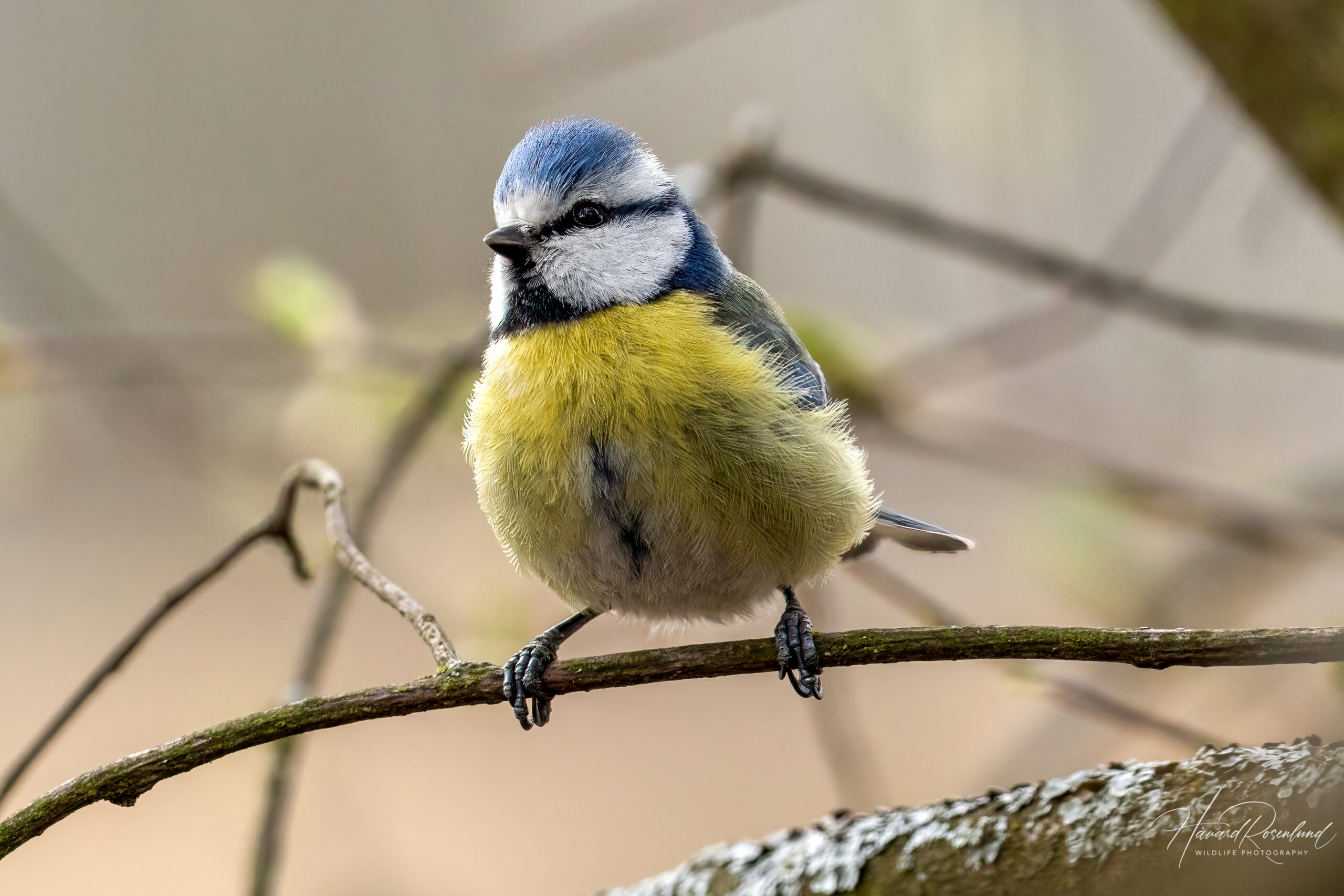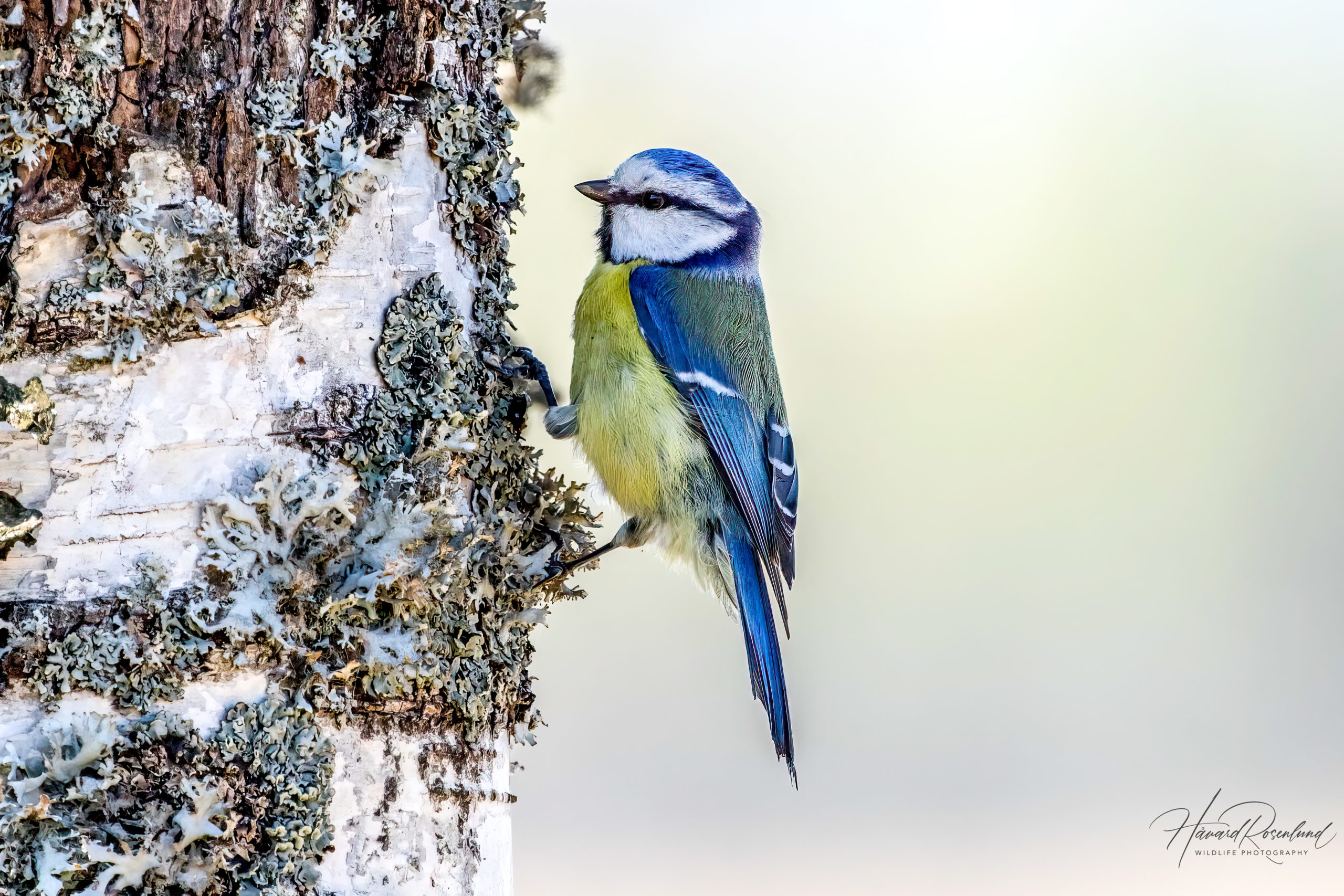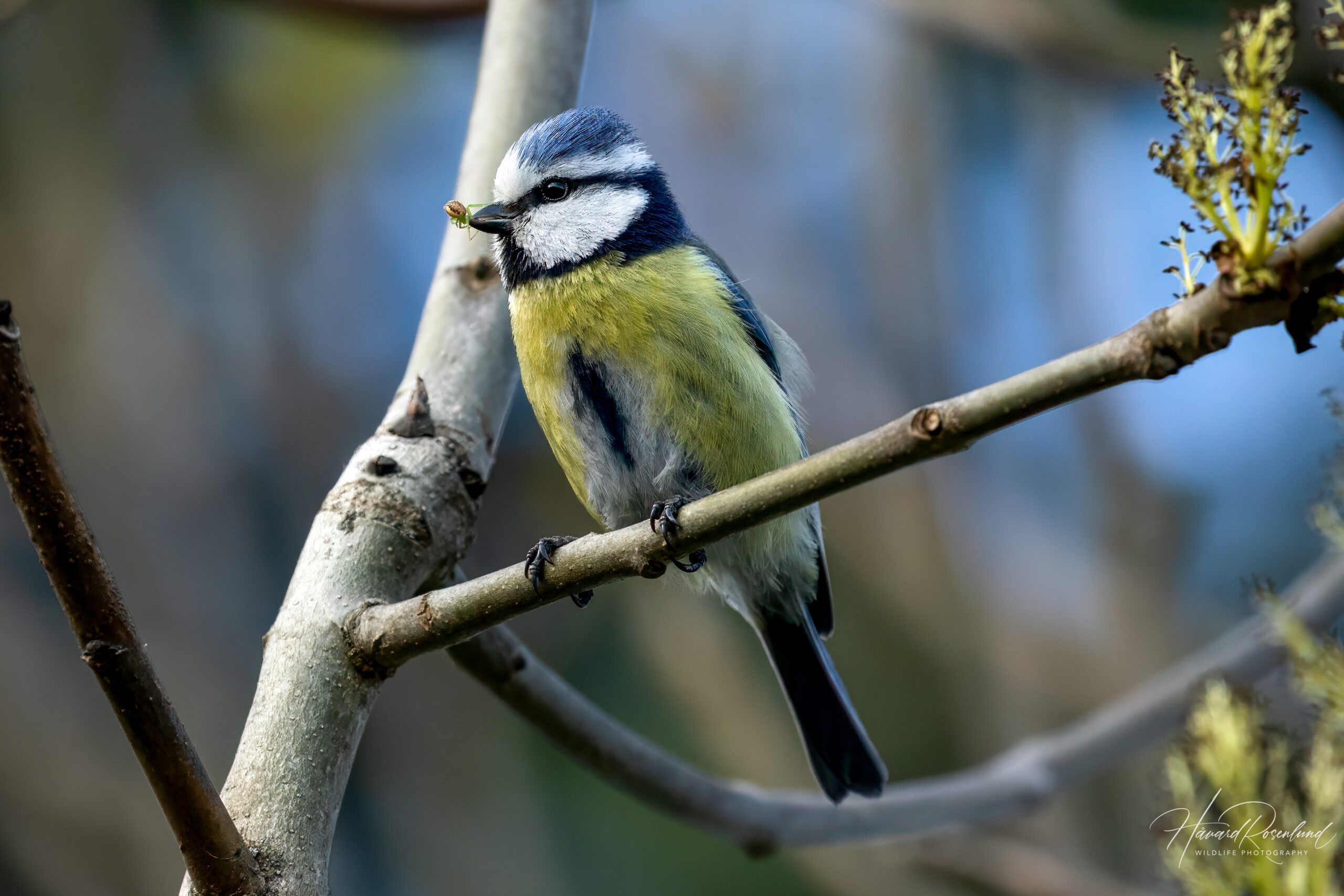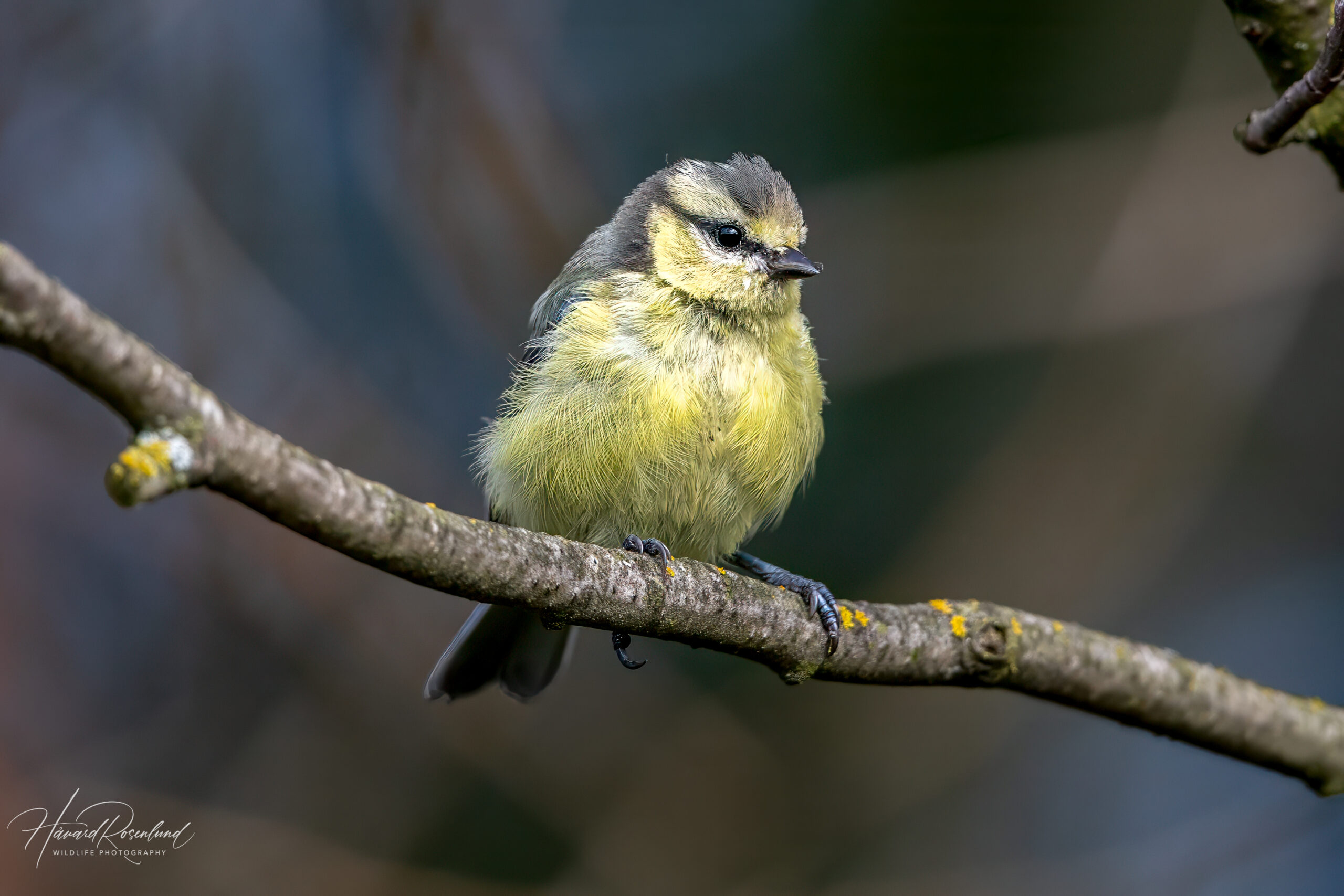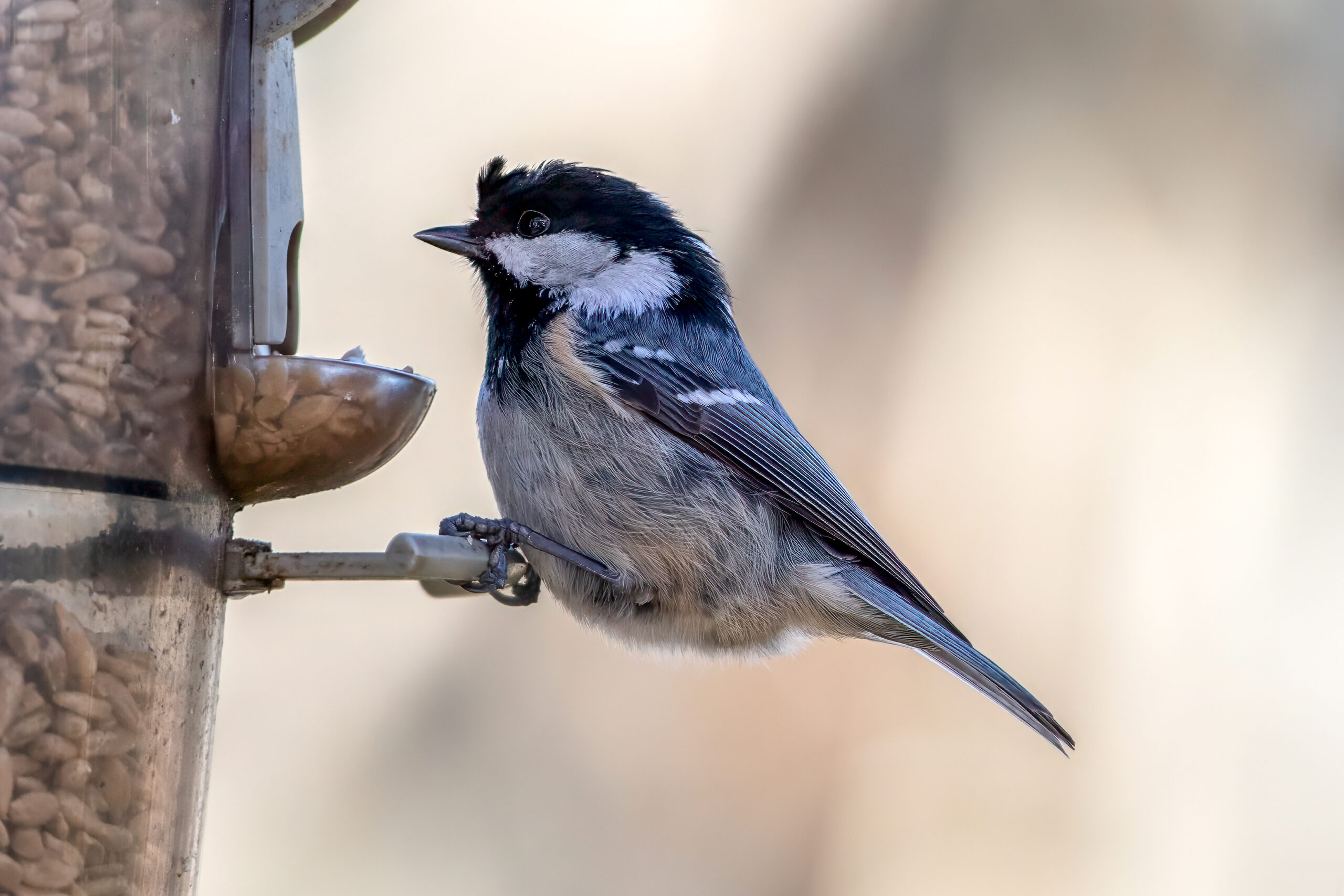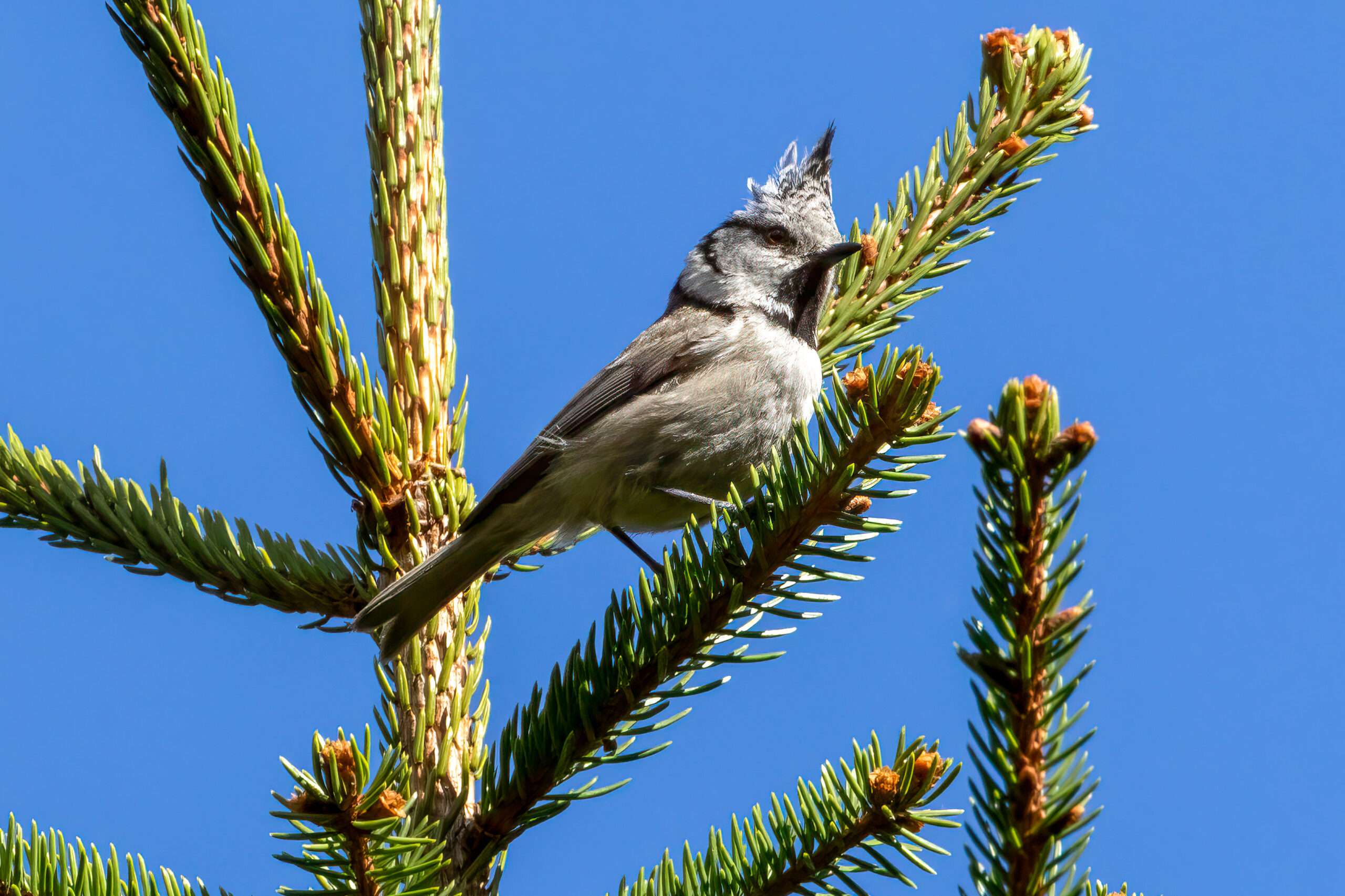Description
The Eurasian blue tit (Cyanistes caeruleus) is a small, colorful passerine bird widespread across Europe and parts of Asia. Its range extends from the Iberian Peninsula in the west, across Europe and into western Siberia, and southwards to North Africa and the Middle East. It is known for its vibrant blue and yellow plumage. It measures about 12 cm (4.7 in) in length and weighs around 11 grams (0.4 oz). The bird’s distinctive features include a bright blue cap, white face, dark line passing through the eyes, a yellow belly, blue wings and a green back. It can be distinguished from similar species, like the great tit (Parus major), by its smaller size, blue cap, and blue wings.
Diet & habitat
The preferred habitats of Eurasian blue tit are woodlands, gardens, and hedgerows, especially in areas with ample shrubbery and trees. They’re adaptable, thriving in both dense forests and urban areas, provided there are sufficient feeding opportunities and nesting sites. Outside the breeding season, they often join mixed-species feeding flocks, including other tits, enhancing their survival chances by reducing individual predation risk.
Eurasian blue tits are versatile feeders, consuming a variety of insects, spiders, and other small invertebrates, particularly caterpillars, during the breeding season. In autumn and winter, their diet shifts to include seeds and fruits. They exhibit ingenuity in obtaining food, like pecking through milk bottle tops to access cream. These birds also have an excellent memory, which helps them relocate hidden food caches during scarce winter months.
Nesting
The breeding season of the Eurasian blue tit starts from late March to April. They are cavity nesters, with females exclusively building the nest in tree holes or nest boxes, using moss, hair, and feathers. The female lays 5 to 12 speckled eggs. She incubates them for 13 to 15 days while being fed by the male. After hatching, both parents feed the chicks, which fledge in about 18 to 21 days. The fledglings depend on their parents for another 2 to 3 weeks. The timing of their breeding can align with the peak abundance of caterpillars, optimizing food availability for the chicks. In warmer regions, they may produce two broods a year, showcasing their adaptability.
Status
The Eurasian blue tit has a large population and an extensive range. There are no immediate threats to the global population, although local declines can occur due to harsh winters or loss of habitat. It is classified as least concern by the IUCN Red List.






